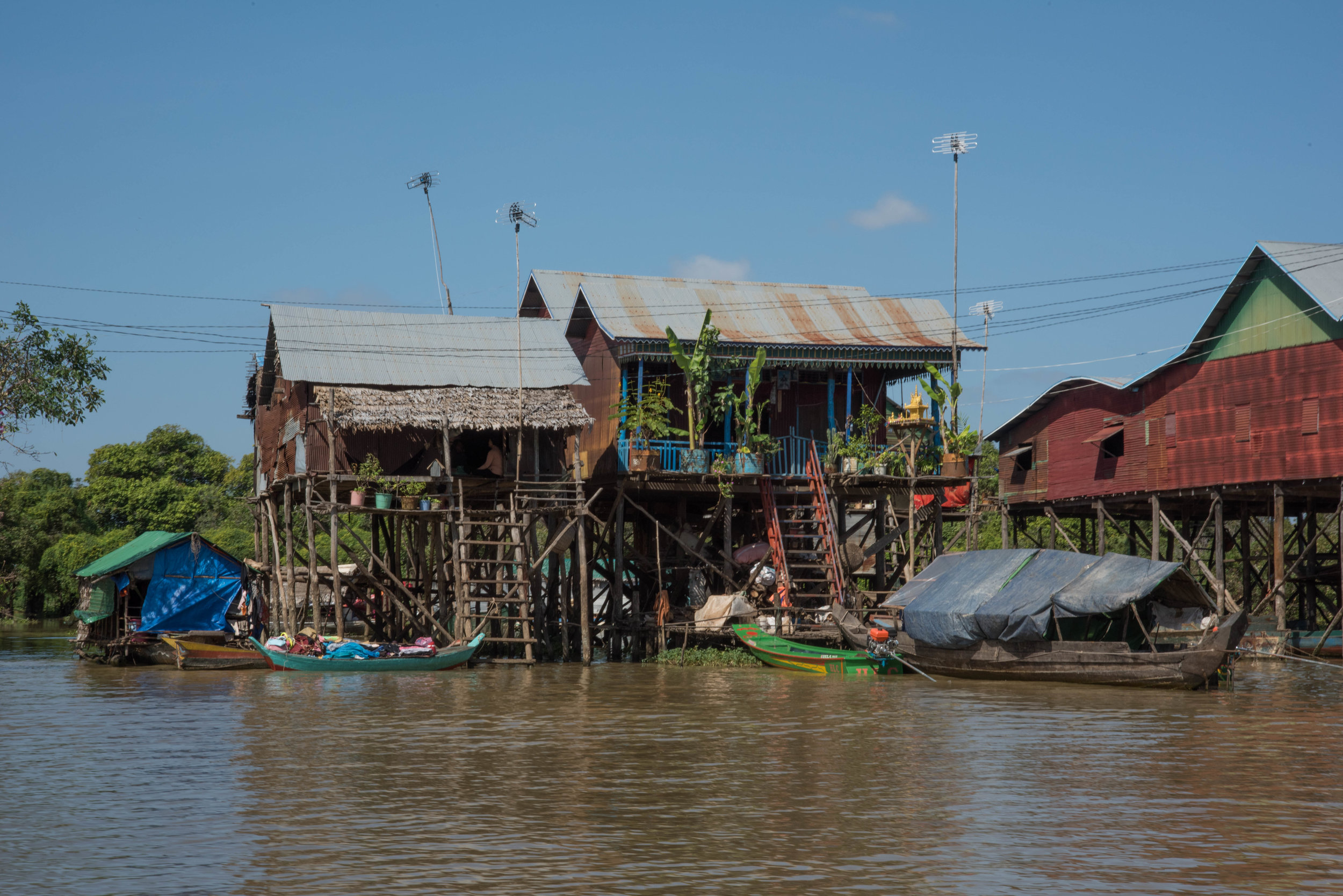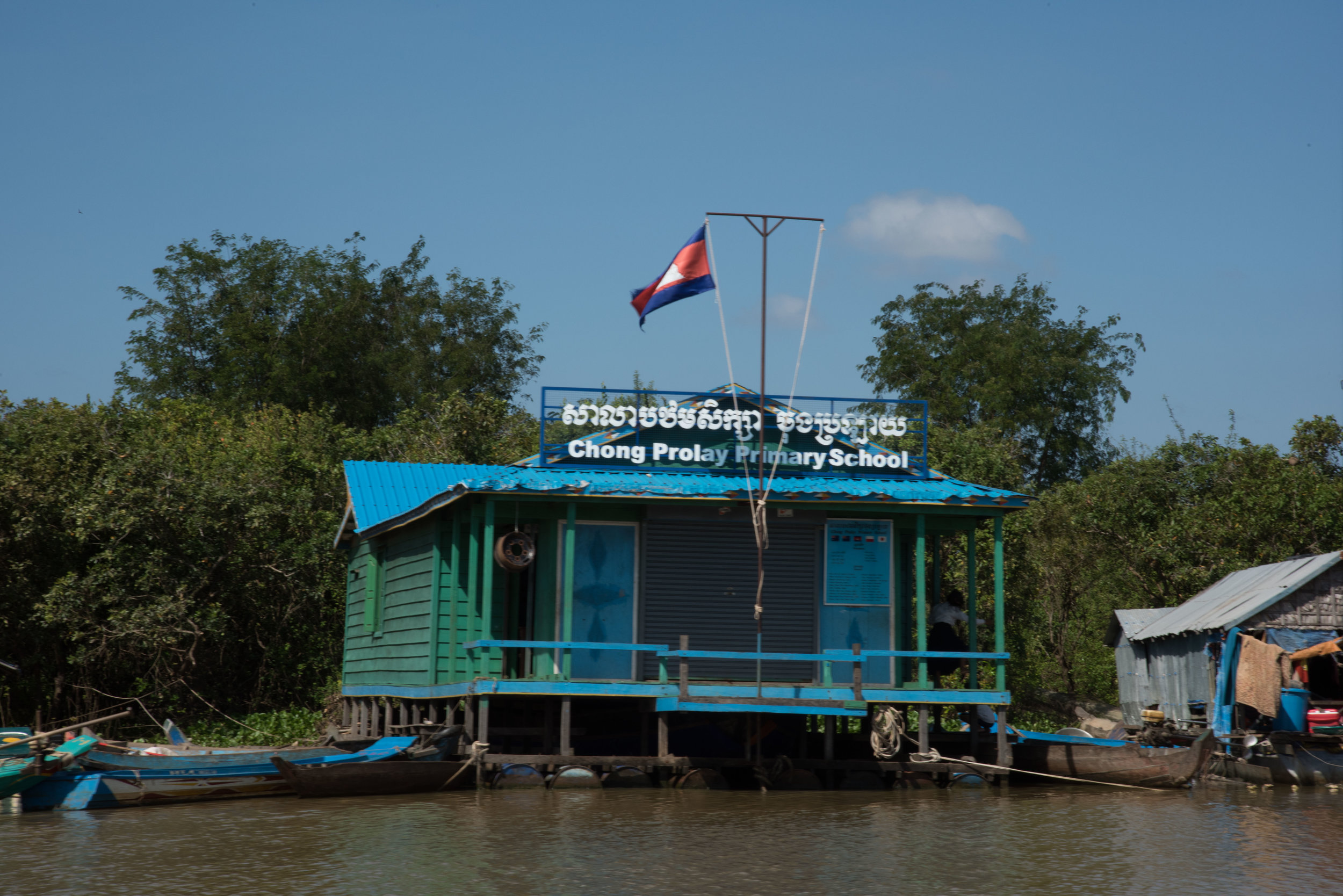Our first destination for the morning was to be Tonle Sap Lake but on the way we visited the Psa Leu market which was quite close to our hotel.
This was certainly not a ‘touristy’ destination but nonetheless a fascinating exposure to the lives of the Siem Reap people.
The market is extensive and undercover and sells food only. We wandered down narrow lanes between the stalls and saw a bewildering array of meats, fish, vegetables, nuts and fruit. There were many locals just having their breakfast at side benches and everyone seemed to be far too busy to even notice our intrusion to their market centre. Women dominated the sellers and buyers and were the ones cutting up meat, killing and gutting live scale fish, plucking various types of fowl, cooking meals and preparing shellfish and crustaceans for their customers. In one section we noted the Muslim women preparing beef meat in halal fashion.
We then went into the adjacent tourist market where persistent haggling was sure to bring prices down significantly. The range of synthetic gems now available for sale is a minefield for the unwary purchaser. We were shown quite large rubies that tested positively with their handheld spectrometer but were far too cheap to be anything but synthetic. A cut and mounted ‘ruby’ stone of size about 5 mm was initially at a price of $30 and when we questioned the genuine nature of the stone the price decreased to $10. In a reputable jewellers this ring, had it been genuine would have been several hundred dollars or even more.
Another tourist item that looked to be a total dud was block of so-called amber with a perfect butterfly embedded in it.
After all this we drove for about 40 km south eastwards to Tonle Sap Lake. This lake is situated in the very heart of Cambodia and is the very largest freshwater lake in Southeast Asia. The township we arrived at was Kompong Khleang and here we boarded an old wooden boat with some very ancient steering, gear and throttle controls linked by pieces of rope.
We chugged out along a narrow waterway towards the open water of the lake.
On the way we passed the local houses all perched on stilts as the water level in the lake varies greatly with seasonal variations. The lake is presently at its smallest at around 2 500 sq km but after the monsoon season the area becomes about 12 000 sq km and the depth may increase by as much as 5 m. Most of the houses had boats tethered nearby and the preoccupation for the village is fishing using nets and fish traps. Apparently the lake has over 200 different species of fish and the surrounding floodplain has a diversity of waterbirds. Tonle Sap Lake supplies over half of Cambodia’s annual supply of fish.
Around a corner in the main channel we entered the floating village section of Kompong Khleang. Apart from floating homes we passed schools, general stores, mechanics’ workshops, petrol stations and small cafes which were all afloat.
After travelling for nearly an hour we reached the open waters of Tonle Sap Lake and stopped for a picnic lunch aboard our boat.
On our return journey to the docking area we passed the school where students were heading home in boats with paddles.
In the mid afternoon we headed back in our minivan towards Siem Reap stopping at the Roluos Group of temples.
The first we visited was the late 9th century temple of Preah Ko meaning ‘temple of the sacred bull’. This temple was dedicated by Indravarman I to his ancestors in 879. This was a Hindu temple and statues of three of Shiva’s bulls sit guarding the six sanctuary towers. The towers were made from brick but were covered with lime stucco most of which has subsequently been eroded away.
From 1975-79 the Khmer Rouge used the towers as an ammunition dump and storehouse for food.
The nearby Bakong Temple was to be our final tourist destination for this day. This 9th century temple has the nine-headed serpent naga as features on both sides of the embankments of the causeway leading across the moat. Dedicated to Shiva and Vishnu, Bakong served as the capital of the Khmer empire until the end of the 9th century.
The temple is a five tiered, 16 m high pyramid representing Mt. Meru the home of the Hindu gods and the centre of the universe! Elephant statues carved from single pieces of rock adorn the four corners of the second tier.
The guardian lions that flank the stairways up to the top level diminish in size with each tier risen tricking the eye into thinking the temple is larger than it really is.
We returned to our hotel at 15:00 and rested before going out for an early meal. Tomorrow we need to be on the road by 04:45 in order to see the sunrise over Angkor Wat and to avoid some of the crowd that will gather by mid-morning.















